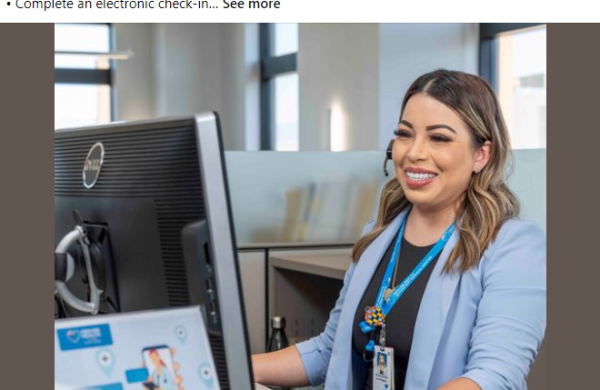 Hong Nguyan (Credit: Beth Freeman)[/caption]
The health hub turned the numbers around by hiring bilingual patient navigators in all their primary care clinics, beginning with their top three non-English languages: Spanish, Arabic, and Vietnamese. “When a patient comes in with no English, it’s scary -- it’s very scary,” patient navigator Joseph Dang told the filmmakers. Patient Hong Nguyan agrees. “When I come in and see there are no Vietnamese people, I feel so lost,” she confided to Dang in Vietnamese. But now, with Dang and other skilled guides trusted by the community, she and her fellow patients are more eager to set up telehealth appointments. The clinic also offers instructions on telehealth in different languages for smartphones, computers and tablets, as well as interpreters for the visits if needed.
In addition, the clinic strives to create culturally sensitive materials rather than rote, word-by-word translations. “We wanted to ‘trans-create’ the material in order to be culturally competent,” said Denver patient navigator Elizabeth Medina. “We want patients to feel understood, to feel valued, and to feel that we are aware of their culture [and value it].”
The video was created by Beth Freeman and team for the Center for Care Innovations and Kaiser Permanente, which funded the project in Denver as part of CCI’s Virtual Care Innovations Network, a virtual health collaboration founded by Kaiser Permanente.
Hong Nguyan (Credit: Beth Freeman)[/caption]
The health hub turned the numbers around by hiring bilingual patient navigators in all their primary care clinics, beginning with their top three non-English languages: Spanish, Arabic, and Vietnamese. “When a patient comes in with no English, it’s scary -- it’s very scary,” patient navigator Joseph Dang told the filmmakers. Patient Hong Nguyan agrees. “When I come in and see there are no Vietnamese people, I feel so lost,” she confided to Dang in Vietnamese. But now, with Dang and other skilled guides trusted by the community, she and her fellow patients are more eager to set up telehealth appointments. The clinic also offers instructions on telehealth in different languages for smartphones, computers and tablets, as well as interpreters for the visits if needed.
In addition, the clinic strives to create culturally sensitive materials rather than rote, word-by-word translations. “We wanted to ‘trans-create’ the material in order to be culturally competent,” said Denver patient navigator Elizabeth Medina. “We want patients to feel understood, to feel valued, and to feel that we are aware of their culture [and value it].”
The video was created by Beth Freeman and team for the Center for Care Innovations and Kaiser Permanente, which funded the project in Denver as part of CCI’s Virtual Care Innovations Network, a virtual health collaboration founded by Kaiser Permanente. How Denver Health improved telehealth equity for its 55,000 patients who speak a language other than English.

